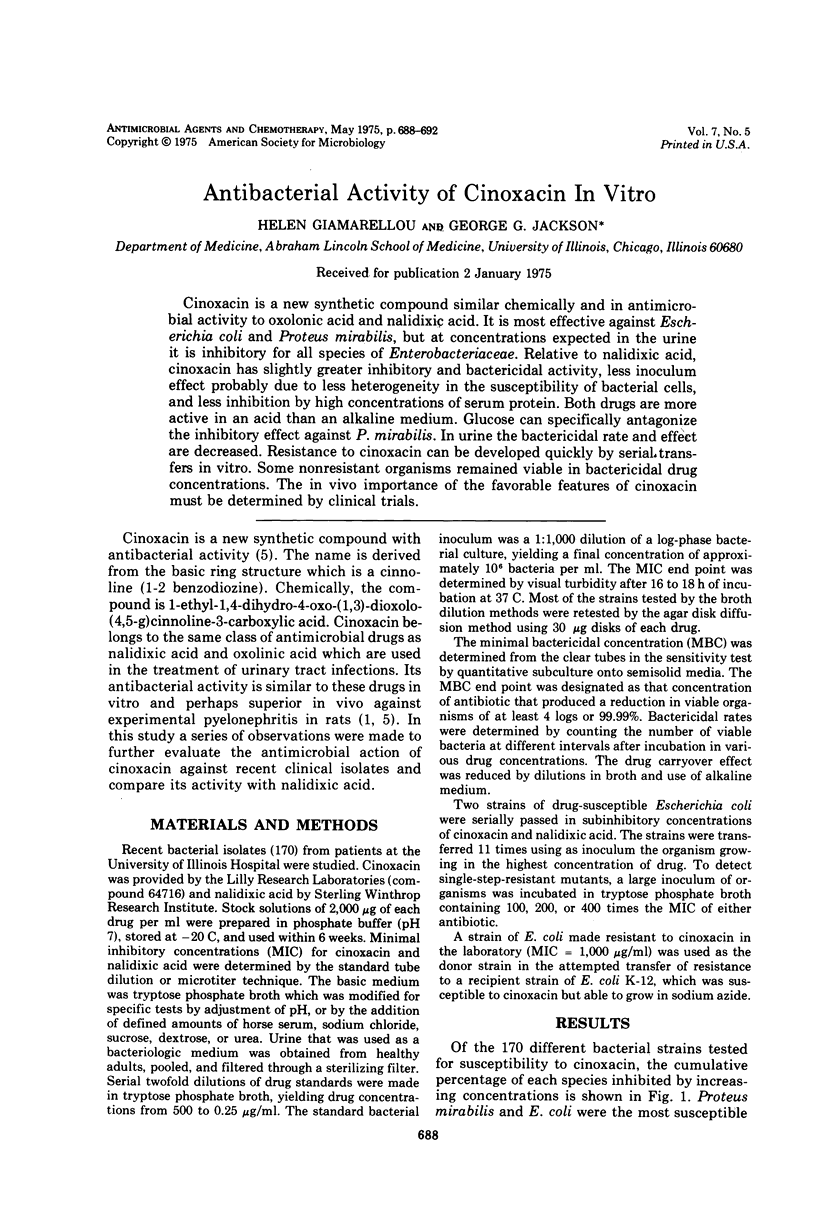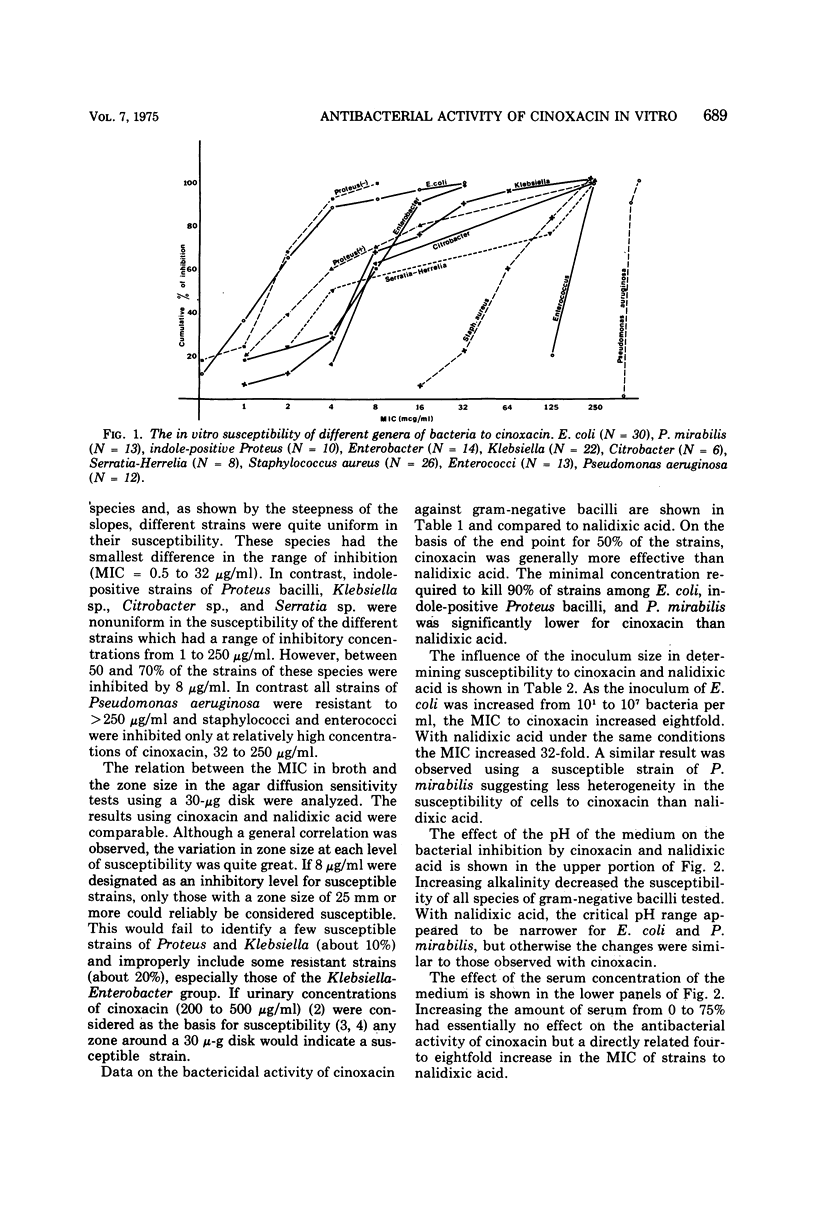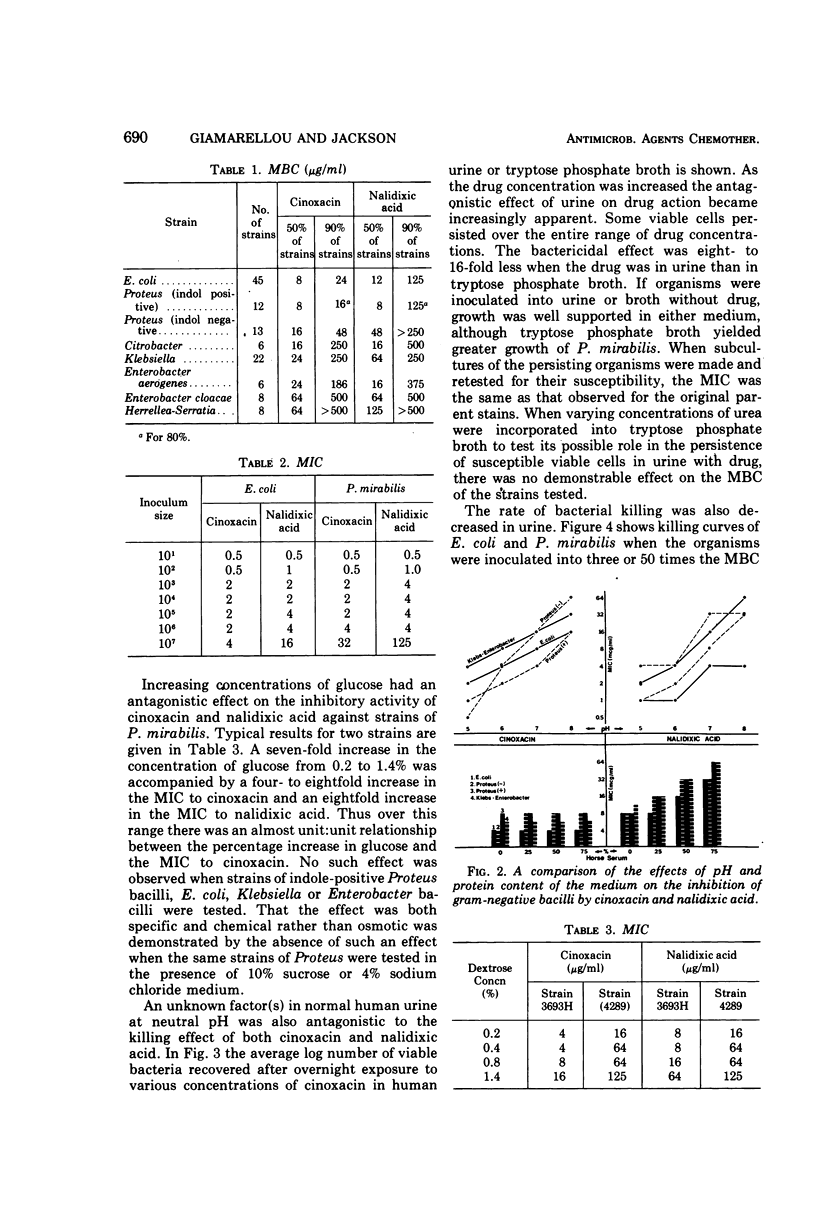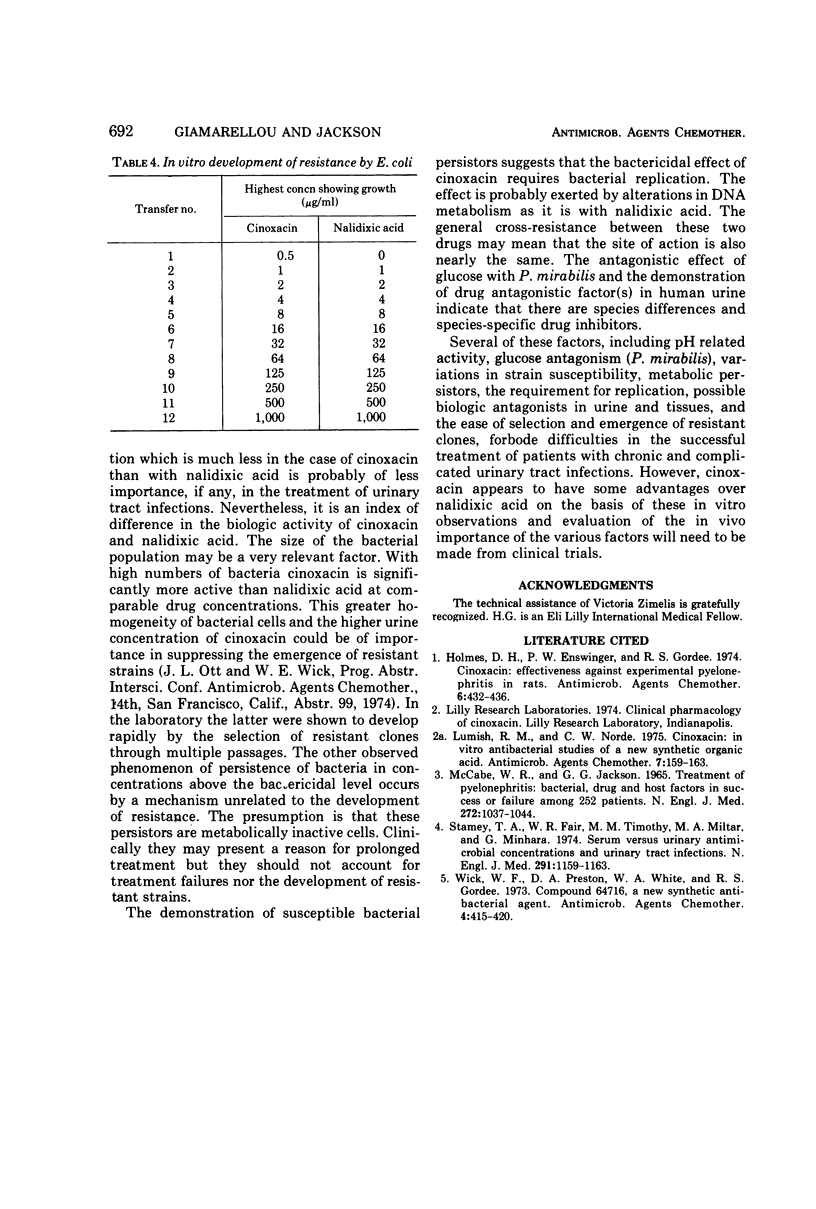Abstract
Cinoxacin is a new synthetic compound similar chemically and in antimicrobial activity to oxolonic acid and nalidixic acid. It is most effective against Escherichia coli and Proteus mirabilis, but at concentrations expected in the urine it is inhibitory for all species of Enterobacteriaceae. Relative to nalidixic acid, cinoxacin has slightly greater inhibitory and bactericidal activity, less inoculum effect probably due to less heterogeneity in the susceptibility of bacterial cells, and less inhibition by high concentrations of serum protein. Both drugs are more active in an acid than an alkaline medium. Glucose can specifically antagonize the inhibitory effect against P. mirabilis. In urine the bactericidal rate and effect are decreased. Resistance to cinoxacin can be developed quickly by serial transfers in vitro. Some nonresistant organisms remained viable in bactericidal drug concentrations. The in vivo importance of the favorable features of cinoxacin must be determined by clinical trials.
Full text
PDF




Selected References
These references are in PubMed. This may not be the complete list of references from this article.
- Holmes D. H., Ensminger P. W., Gordee R. S. Cinoxacin: effectiveness against experimental pyelonephritis in rats. Antimicrob Agents Chemother. 1974 Oct;6(4):432–436. doi: 10.1128/aac.6.4.432. [DOI] [PMC free article] [PubMed] [Google Scholar]
- Lumish R. M., Norden C. W. Cinoxacin: in vitro antibacterial studies of a new synthetic organic acid. Antimicrob Agents Chemother. 1975 Feb;7(2):159–163. doi: 10.1128/aac.7.2.159. [DOI] [PMC free article] [PubMed] [Google Scholar]
- Stamey T. A., Fair W. R., Timothy M. M., Millar M. A., Mihara G., Lowery Y. C. Serum versus urinary antimicrobial concentrations in cure of urinary-tract infections. N Engl J Med. 1974 Nov 28;291(22):1159–1163. doi: 10.1056/NEJM197411282912204. [DOI] [PubMed] [Google Scholar]
- Wick W. E., Preston D. A., White W. A., Gordee R. S. Compound 64716, a new synthetic antibacterial agent. Antimicrob Agents Chemother. 1973 Oct;4(4):415–420. doi: 10.1128/aac.4.4.415. [DOI] [PMC free article] [PubMed] [Google Scholar]


